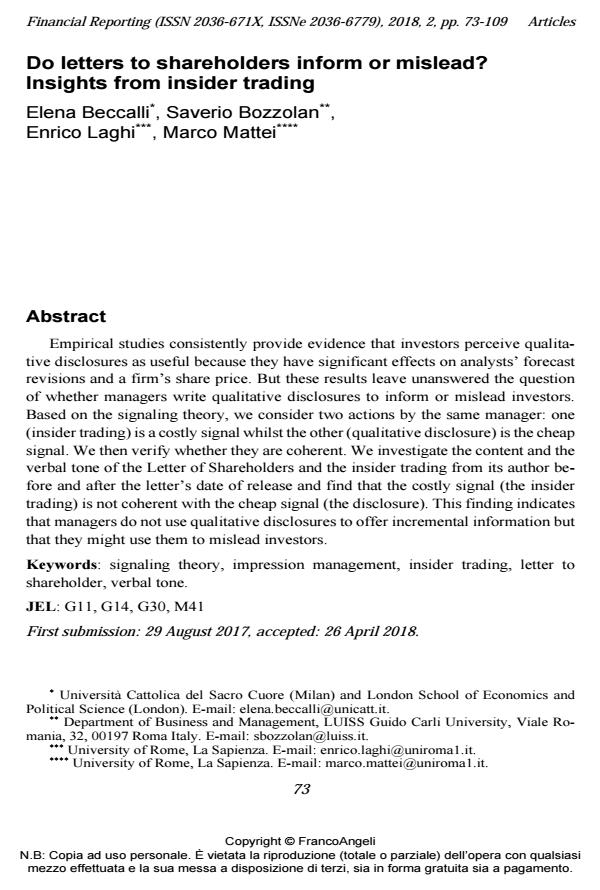Do letters to shareholders inform or mislead? Insights from insider trading
Journal title FINANCIAL REPORTING
Author/s Elena Beccalli, Saverio Bozzolan, Enrico Laghi, Marco Mattei
Publishing Year 2018 Issue 2018/2
Language English Pages 37 P. 73-109 File size 589 KB
DOI 10.3280/FR2018-002004
DOI is like a bar code for intellectual property: to have more infomation
click here
Below, you can see the article first page
If you want to buy this article in PDF format, you can do it, following the instructions to buy download credits

FrancoAngeli is member of Publishers International Linking Association, Inc (PILA), a not-for-profit association which run the CrossRef service enabling links to and from online scholarly content.
Empirical studies consistently provide evidence that investors perceive qualitative disclosures as useful because they have significant effects on analysts’ forecast revisions and a firm’s share price. But these results leave unanswered the question of whether managers write qualitative disclosures to inform or mislead investors. Based on the signaling theory, we consider two actions by the same manager: one (insider trading) is a costly signal whilst the other (qualitative disclosure) is the cheap signal. We then verify whether they are coherent. We investigate the content and the verbal tone of the Letter of Shareholders and the insider trading from its author before and after the letter’s date of release and find that the costly signal (the insider trading) is not coherent with the cheap signal (the disclosure). This finding indicates that managers do not use qualitative disclosures to offer incremental information but that they might use them to mislead investors.
Keywords: Signaling theory, impression management, insider trading, letter to shareholder, verbal tone.
Jel codes: G11, G14, G30, M41
Elena Beccalli, Saverio Bozzolan, Enrico Laghi, Marco Mattei, Do letters to shareholders inform or mislead? Insights from insider trading in "FINANCIAL REPORTING" 2/2018, pp 73-109, DOI: 10.3280/FR2018-002004